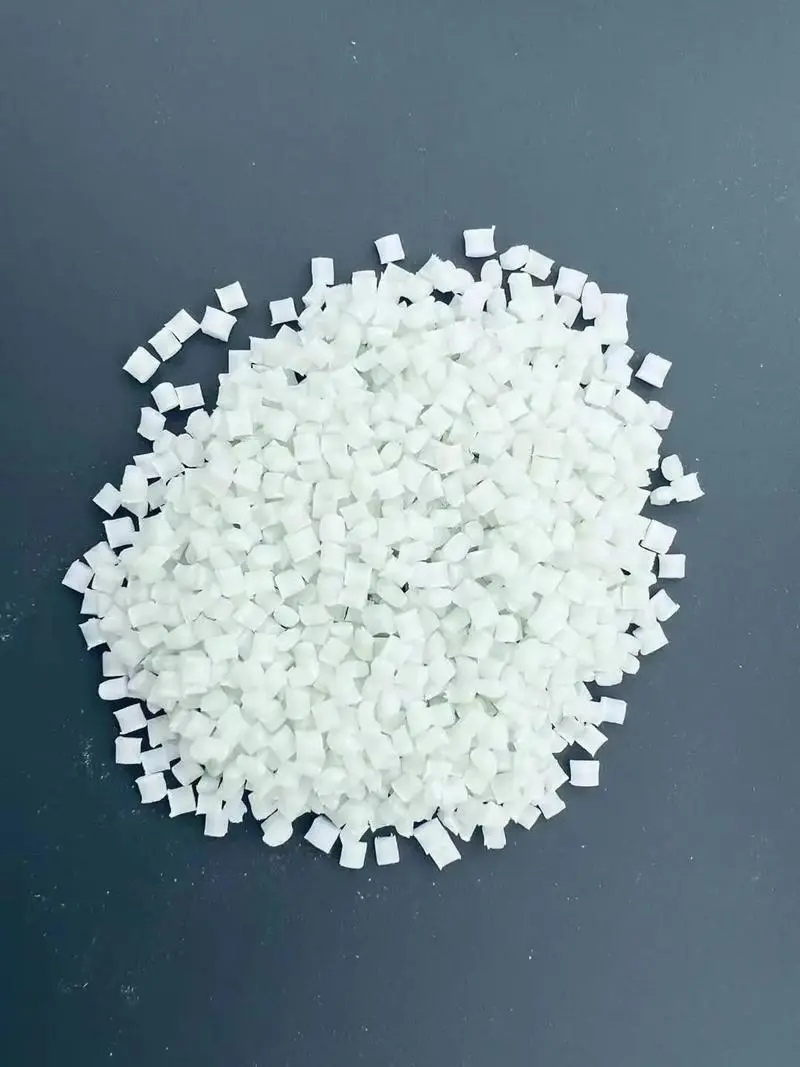Εισαγωγή του πολυαμιδίου 6
Το πολυαμίδιο 6, κοινώς γνωστό ως νάιλον 6, είναι ένα ευρέως χρησιμοποιούμενο συνθετικό πολυμερές που αναγνωρίζεται για την ανθεκτικότητα και την ευελιξία του. Βρίσκεται σε προϊόντα που κυμαίνονται από κλωστοϋφαντουργικά προϊόντα έως εξαρτήματα αυτοκινήτων, και τα χαρακτηριστικά απόδοσης του το έχουν καταστήσει απαραίτητο σε διάφορες βιομηχανίες. Ωστόσο, οι περιβαλλοντικές επιπτώσεις του, ιδίως η βιοδιασπασιμότητά του, έχουν προκαλέσει σημαντικές συζητήσεις και έρευνες. Το παρόν άρθρο εξετάζει τη βιοδιασπασιμότητα του πολυαμιδίου 6, εξετάζοντας τους παράγοντες που επηρεάζουν τη διάσπασή του και τις πιθανές συνέπειες για το περιβάλλον.
Πολυαμίδιο 6: Ευέλικτο συνθετικό πολυμερές
Ποικίλες εφαρμογές και δομή
Το πολυαμίδιο 6 ξεχωρίζει λόγω της ημικρυσταλλικής του φύσης, συνδυάζοντας τόσο κρυσταλλικές όσο και άμορφες περιοχές στη μοριακή του δομή. Αυτή η μοναδική σύνθεση προσδίδει ισχυρές μηχανικές ιδιότητες, καθιστώντας το μια δημοφιλή επιλογή στους τομείς των κλωστοϋφαντουργικών προϊόντων, της αυτοκινητοβιομηχανίας και των ηλεκτρονικών. Η ημικρυσταλλική φύση είναι καθοριστικής σημασίας για την απόδοσή του, εξισορροπώντας την ευελιξία με την αντοχή.
Τι είναι η βιοδιασπασιμότητα;
Η βιοαποδομησιμότητα αναφέρεται στην ικανότητα ενός υλικού να αποσυντίθεται από ζωντανούς οργανισμούς, όπως βακτήρια και μύκητες, σε απλούστερες ουσίες που μπορούν να επαναρροφηθούν στο φυσικό περιβάλλον. Αν και το πολυαμίδιο 6 είναι συνθετικό και δεν είναι εγγενώς βιοδιασπώμενο, ορισμένες συνθήκες μπορούν να επιτρέψουν την αποικοδόμησή του. Αυτές περιλαμβάνουν την παρουσία συγκεκριμένων μικροοργανισμών και περιβαλλοντικών παραγόντων που διευκολύνουν τη διαδικασία διάσπασης.
Παράγοντες που επηρεάζουν την υποβάθμιση του πολυαμιδίου 6
Ο ρόλος των προσθέτων και των πληρωτικών
Τα πρόσθετα και τα πληρωτικά υλικά παίζουν σημαντικό ρόλο στη βιοαποικοδομησιμότητα του PA6. Οι ουσίες αυτές μπορούν να μεταβάλουν τις ιδιότητες του πολυμερούς, είτε ενισχύοντας είτε εμποδίζοντας την αποικοδόμησή του. Για παράδειγμα, η ενσωμάτωση βιοαποικοδομήσιμων προσθέτων μπορεί ενδεχομένως να βελτιώσει τη διάσπαση του PA6 καθιστώντας το πιο ευαίσθητο στη δράση των μικροβίων.
Επιπτώσεις των προσμίξεων και των μολυσματικών παραγόντων
Οι ακαθαρσίες και οι προσμίξεις που υπάρχουν στο πολυαμίδιο 6 μπορούν επίσης να επηρεάσουν την αποικοδόμησή του. Ανάλογα με τη φύση τους, οι ουσίες αυτές μπορούν είτε να επιταχύνουν είτε να επιβραδύνουν τη διαδικασία διάσπασης. Η αλληλεπίδραση μεταξύ αυτών των προσμίξεων και των περιβαλλοντικών συνθηκών στις οποίες βρίσκεται το πολυμερές είναι καθοριστικής σημασίας για τον προσδιορισμό του ρυθμού αποικοδόμησης.
Η διαδικασία υποβάθμισης
Η αποικοδόμηση του PA6 περιλαμβάνει τη διάσπαση των μακρών πολυμερικών αλυσίδων του σε μικρότερα μόρια. Η διαδικασία αυτή μπορεί να συμβεί τόσο σε αερόβια (παρουσία οξυγόνου) όσο και σε αναερόβια (απουσία οξυγόνου) περιβάλλοντα. Ο ρυθμός αποικοδόμησης επηρεάζεται από διάφορους παράγοντες, συμπεριλαμβανομένης της παρουσίας μικροοργανισμών και των περιβαλλοντικών συνθηκών, όπως η θερμοκρασία και η υγρασία.
Συμπέρασμα του βιοδιασπώμενου πολυαμιδίου 6
Ενώ το πολυαμίδιο 6 δεν είναι εγγενώς βιοδιασπώμενο, μπορεί να υποστεί αποικοδόμηση υπό συγκεκριμένες συνθήκες. Παράγοντες όπως η ενσωμάτωση βιοαποικοδομήσιμων προσθέτων, η φύση των προσμίξεων και το περιβαλλοντικό πλαίσιο παίζουν καθοριστικό ρόλο σε αυτή τη διαδικασία. Η κατανόηση αυτής της δυναμικής είναι απαραίτητη για την αξιολόγηση των περιβαλλοντικών επιπτώσεων του PA6 και των εφαρμογών του. Καθώς οι βιομηχανίες συνεχίζουν να βασίζονται σε αυτό το ευέλικτο πολυμερές, η εξέταση της βιοαποικοδομησιμότητάς του και η διερεύνηση τρόπων βελτίωσής της θα είναι ζωτικής σημασίας για τη βιώσιμη ανάπτυξη και την περιβαλλοντική διαχείριση.
Συχνές ερωτήσεις σχετικά με τη βιοδιασπασιμότητα του πολυαμιδίου 6
1.Τι είναι το πολυαμίδιο 6;
Πολυαμίδιο 6, επίσης γνωστό ως νάιλον 6, είναι ένα συνθετικό πολυμερές γνωστό για την αντοχή και την ευελιξία του. Χρησιμοποιείται εκτενώς σε διάφορες βιομηχανίες, όπως η κλωστοϋφαντουργία, η αυτοκινητοβιομηχανία και η ηλεκτρονική. Η ημικρυσταλλική δομή του, η οποία συνδυάζει τόσο κρυσταλλικές όσο και άμορφες περιοχές, συμβάλλει στις ισχυρές μηχανικές του ιδιότητες.
2.Είναι το πολυαμίδιο 6 βιοδιασπώμενο;
Το νάιλον 6 δεν είναι εγγενώς βιοδιασπώμενο. Ως συνθετικό πολυμερές, δεν διασπάται φυσικά στο περιβάλλον. Ωστόσο, υπό συγκεκριμένες συνθήκες, όπως η παρουσία ορισμένων μικροοργανισμών ή περιβαλλοντικών παραγόντων, το PA6 μπορεί να αποικοδομηθεί με την πάροδο του χρόνου.
3. Τι σημαίνει βιοδιασπασιμότητα;
Η βιοδιασπασιμότητα αναφέρεται στην ικανότητα ενός υλικού να αποσυντίθεται από ζωντανούς οργανισμούς, όπως βακτήρια και μύκητες, σε απλούστερες ουσίες που μπορούν να απορροφηθούν από το περιβάλλον. Για το πολυαμίδιο 6, η βιοαποικοδόμηση περιλαμβάνει τη διάσπαση των πολυμερικών αλυσίδων του σε μικρότερα μόρια τα οποία οι μικροοργανισμοί μπορούν να αποσυνθέσουν περαιτέρω.
4.Πώς επηρεάζουν τα πρόσθετα και τα πληρωτικά υλικά την αποικοδόμηση του πολυαμιδίου 6;
Τα πρόσθετα και τα πληρωτικά μπορούν να επηρεάσουν σημαντικά τη βιοαποικοδόμηση του νάιλον 6. Οι ουσίες αυτές μπορούν είτε να ενισχύσουν είτε να παρεμποδίσουν τη διαδικασία αποικοδόμησης. Για παράδειγμα, η ενσωμάτωση βιοαποικοδομήσιμων προσθέτων μπορεί να καταστήσει το νάιλον 6 πιο ευαίσθητο στη μικροβιακή διάσπαση, βελτιώνοντας ενδεχομένως τη βιοαποικοδομησιμότητά του.
5. Μπορούν οι προσμίξεις να επηρεάσουν τη διαδικασία αποικοδόμησης;
Ναι, οι ακαθαρσίες και οι προσμίξεις στο νάιλον 6 μπορούν να επηρεάσουν την αποικοδόμησή του. Ανάλογα με τον τύπο τους και την αλληλεπίδρασή τους με το περιβάλλον, μπορούν είτε να επιταχύνουν είτε να επιβραδύνουν τη διαδικασία αποικοδόμησης. Οι συγκεκριμένες συνθήκες στις οποίες αποικοδομείται το πολυμερές παίζουν επίσης καθοριστικό ρόλο στον καθορισμό του ρυθμού διάσπασης.
6. Πώς υποβαθμίζεται το πολυαμίδιο 6;
Η αποικοδόμηση του νάιλον 6 περιλαμβάνει τη διάσπαση των μακρών πολυμερικών αλυσίδων του σε μικρότερα μόρια. Η διαδικασία αυτή μπορεί να συμβεί τόσο σε αερόβιο (με οξυγόνο) όσο και σε αναερόβιο (χωρίς οξυγόνο) περιβάλλον. Η παρουσία μικροοργανισμών και παράγοντες όπως η θερμοκρασία και η υγρασία μπορούν να επηρεάσουν τον ρυθμό αποικοδόμησης.
7.Ποιες είναι οι περιβαλλοντικές επιπτώσεις του πολυαμιδίου 6;
Δεδομένου ότι το νάιλον 6 δεν είναι εγγενώς βιοαποικοδομήσιμο, η συσσώρευσή του στο περιβάλλον θα μπορούσε να δημιουργήσει πιθανούς κινδύνους. Ωστόσο, η κατανόηση του τρόπου με τον οποίο συγκεκριμένες συνθήκες και πρόσθετα μπορούν να ενισχύσουν την αποικοδόμησή του είναι ζωτικής σημασίας για τον μετριασμό των περιβαλλοντικών του επιπτώσεων. Η αξιολόγηση και η βελτίωση της βιοαποικοδομησιμότητας του νάιλον 6 είναι απαραίτητη για την προώθηση της βιώσιμης χρήσης και τη μείωση του οικολογικού αποτυπώματός του.

